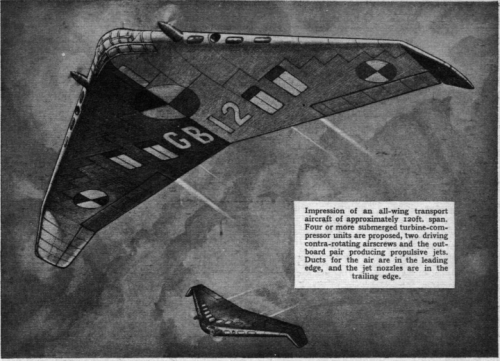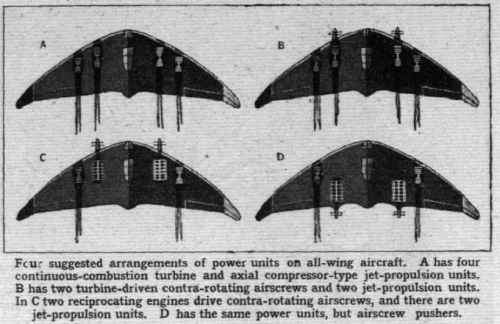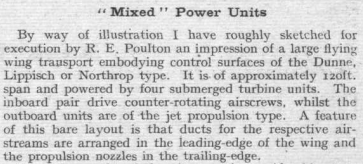- Joined
- 25 June 2014
- Messages
- 1,564
- Reaction score
- 1,499
Two unknown aircraft projects discovered.
Some rumours fleshed out or burst.
Today I visited the Science Museum archives at Wroughton, where they are busy processing the newly-acquired personal archive material of the British Army's first aeroplane designer and father of the tailless swept wing, J. W. Dunne. I was allowed to see several boxes full of small test models and a good many rolls of drawings and other notes.
Key highlights:
D.2. This triplane glider (never built) had a span of 18 ft and a length of 13 ft 6 in, its plan designed on a 4 ft 6 in grid. Control lines ran forward from the Dunne-Huntington style control surfaces, though there is no sign of a pilot's seat in the sketches.
D.9. Never completed, this was a multi-bay sesquiplane of equal chord but unequal span. The stressing drawings are signed by CRF - the Charles Richard Fairey of future fame. (The idea that the D.9 was the James monoplane, as claimed by some more recent historians, is visibly nonsensical).
1923 Monoplane. We all thought he gave up aircraft design in 1913. Not only do his Syndicate drawings run on as late as May 1914 but one picks up again four years after the Syndicate finally dissolved in 1919. It is dated April 1923 and shows a wing much like the earlier monoplanes with their curious twisted and downturned tips, but tapered rather than constant-chord. Significantly, this was just about the time that GTR Hill consulted him over what would become the Pterodactyl glider. Coincidence? Either way, you read of this machine here for the first time.
D.12. He began again in earnest in 1941, in an attempt to help the war effort. He alluded to the project in his posthumous autobiographical account of his prophetic dreams but gave no details. For two years he experimented with three models of recognisably Dunne/Hill extraction, working towards a "D.12" design - both his notes and the models survive. Partial drawings of two full-size machines exist, several of a ca. 66 ft span wing of which one shows a scrap view of a "bubble canopy" cockpit (undated but the bubble canopy is the giveaway). It is probably a fast, high-altitude unarmed reconnaissance type, or possibly a light bomber. The other design is more complete and evidently a smaller craft, perhaps a fighter. It is very Northrop/Lippisch in style. In a hurry with browned and faded drawings, I could not determine whether it is has a pusher prop or just possibly a jet engine. Which if either of these projects was the D.12 will have to wait 'til my next visit.
British Legion Arrowplane. A balsa toy chuck-glider, painted silver. Made by members (i.e. soldiers disabled by battle wounds) of the British Legion, it is a high-aspect-ratio tapered and lightly swept flying wing. In its box, complete with instruction sheet. No mention of Dunne there. He was himself an invalid ex-soldier. Was that why he kept one, or did he have a hand in the design?
Sorry no photos - copyright and all that. One day, the full story from these archives will be told.
Some rumours fleshed out or burst.
Today I visited the Science Museum archives at Wroughton, where they are busy processing the newly-acquired personal archive material of the British Army's first aeroplane designer and father of the tailless swept wing, J. W. Dunne. I was allowed to see several boxes full of small test models and a good many rolls of drawings and other notes.
Key highlights:
D.2. This triplane glider (never built) had a span of 18 ft and a length of 13 ft 6 in, its plan designed on a 4 ft 6 in grid. Control lines ran forward from the Dunne-Huntington style control surfaces, though there is no sign of a pilot's seat in the sketches.
D.9. Never completed, this was a multi-bay sesquiplane of equal chord but unequal span. The stressing drawings are signed by CRF - the Charles Richard Fairey of future fame. (The idea that the D.9 was the James monoplane, as claimed by some more recent historians, is visibly nonsensical).
1923 Monoplane. We all thought he gave up aircraft design in 1913. Not only do his Syndicate drawings run on as late as May 1914 but one picks up again four years after the Syndicate finally dissolved in 1919. It is dated April 1923 and shows a wing much like the earlier monoplanes with their curious twisted and downturned tips, but tapered rather than constant-chord. Significantly, this was just about the time that GTR Hill consulted him over what would become the Pterodactyl glider. Coincidence? Either way, you read of this machine here for the first time.
D.12. He began again in earnest in 1941, in an attempt to help the war effort. He alluded to the project in his posthumous autobiographical account of his prophetic dreams but gave no details. For two years he experimented with three models of recognisably Dunne/Hill extraction, working towards a "D.12" design - both his notes and the models survive. Partial drawings of two full-size machines exist, several of a ca. 66 ft span wing of which one shows a scrap view of a "bubble canopy" cockpit (undated but the bubble canopy is the giveaway). It is probably a fast, high-altitude unarmed reconnaissance type, or possibly a light bomber. The other design is more complete and evidently a smaller craft, perhaps a fighter. It is very Northrop/Lippisch in style. In a hurry with browned and faded drawings, I could not determine whether it is has a pusher prop or just possibly a jet engine. Which if either of these projects was the D.12 will have to wait 'til my next visit.
British Legion Arrowplane. A balsa toy chuck-glider, painted silver. Made by members (i.e. soldiers disabled by battle wounds) of the British Legion, it is a high-aspect-ratio tapered and lightly swept flying wing. In its box, complete with instruction sheet. No mention of Dunne there. He was himself an invalid ex-soldier. Was that why he kept one, or did he have a hand in the design?
Sorry no photos - copyright and all that. One day, the full story from these archives will be told.



